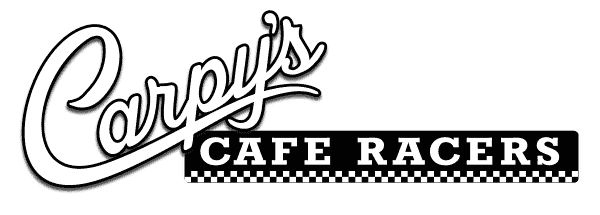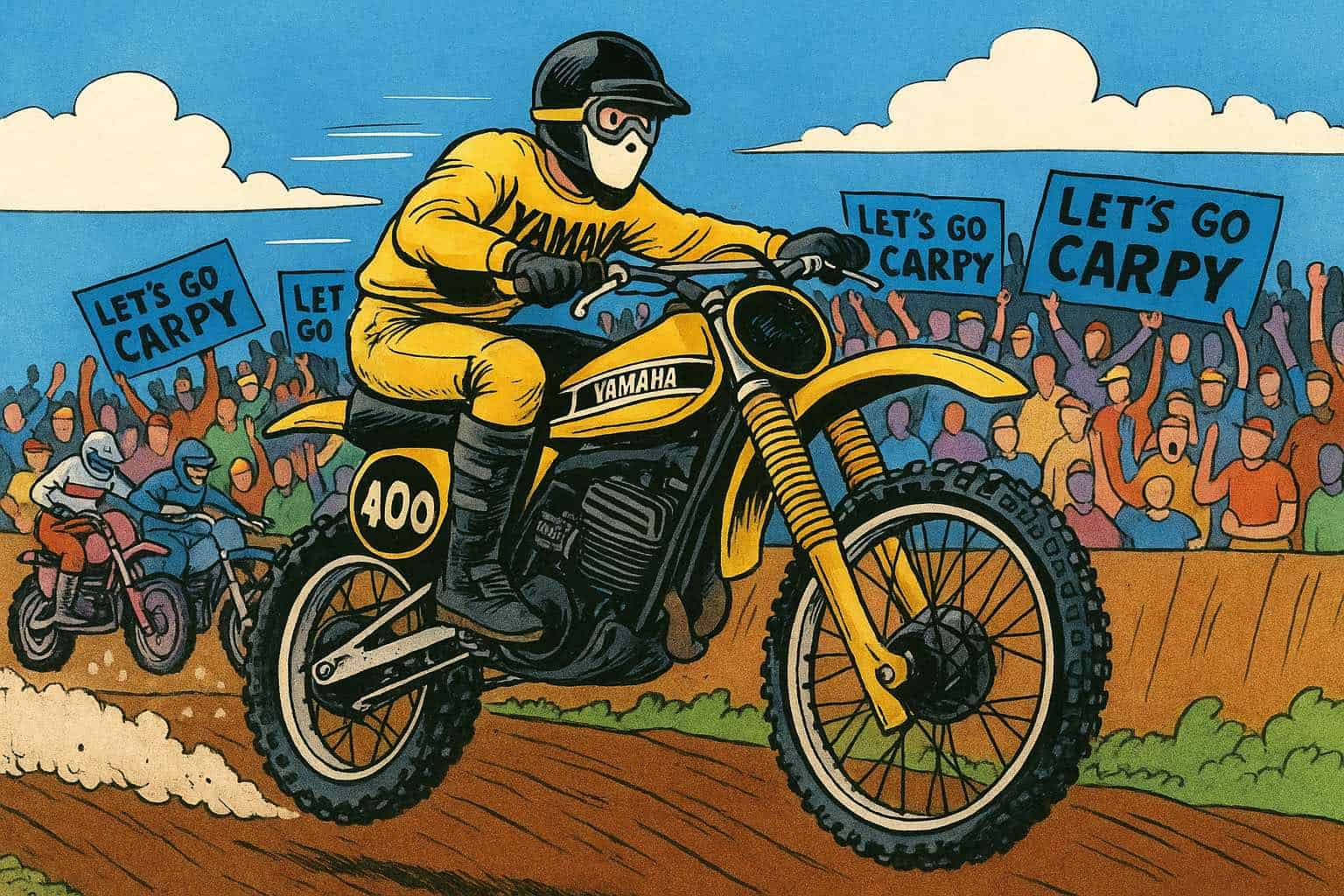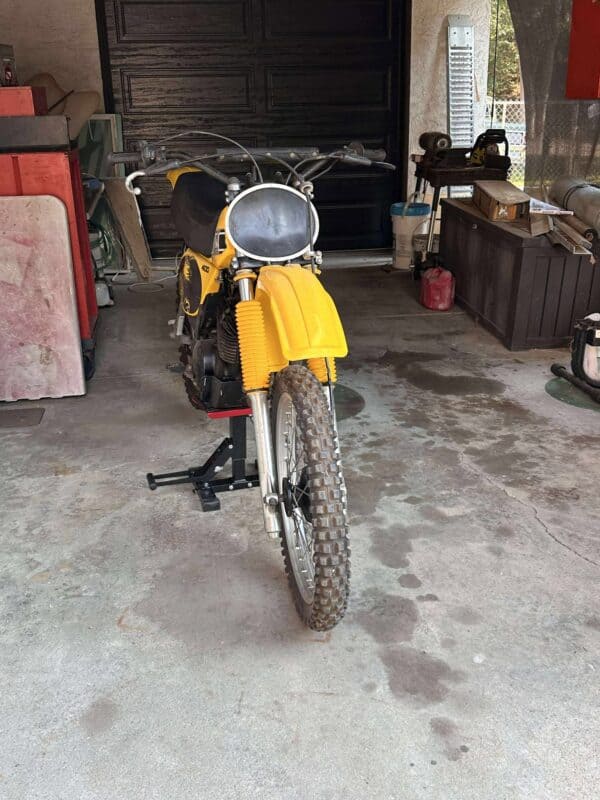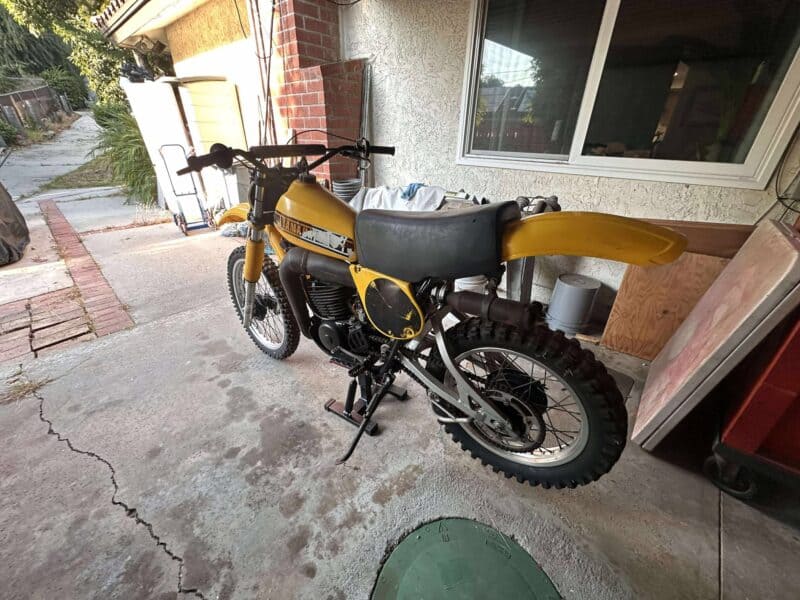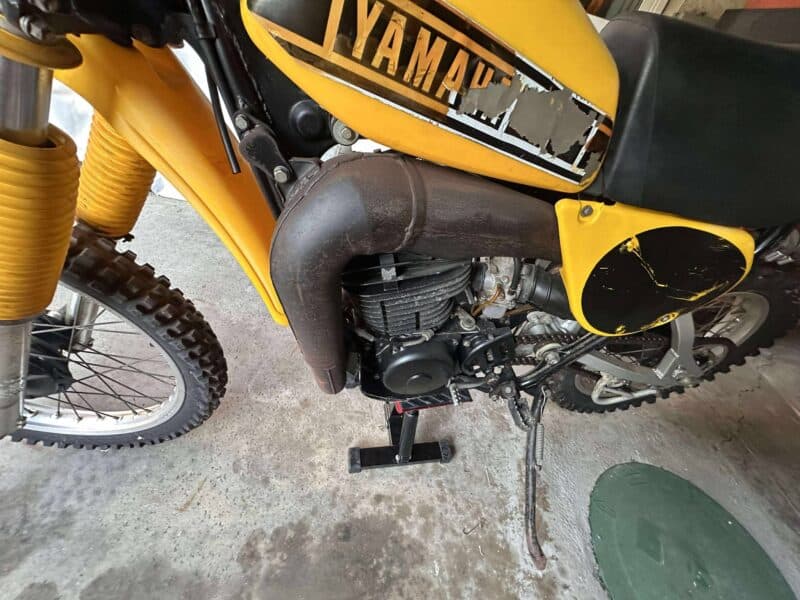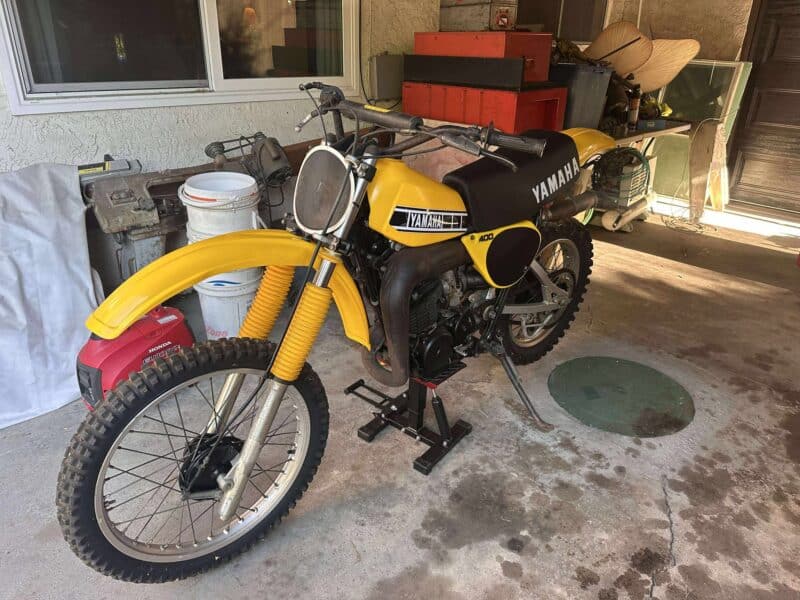Blog
1978 Yamaha YZ400 beginning a new life
I have always loved 2 strokes, the sound of the “Ring a Ding Ding Ding” of the motor, the smell of vegetable oil filling my lungs, the never-ending power band as you lift the front end and wonder if it’s ever going to touch terra firma again, and for a long time I have had this 1978 Yamaha YZ400 Motocross machine sat up in the Barn and need to make a start on simply cleaning it up, as I do not want to get into restoring it as for me, if they are full restored, I would not ride it as it’s so clean lol.
This 47 year old Bone breaker was quite the machine for its year, Bob Hannah won the 250 championship the year before on a YZ250 9 of which I have just sold one) and the yz400 was the first to have an aluminum rear swing arm , instead of the heavy and weak steel tubing versions the year before.
This old girl will run again and am hoping to just freshen up the tired parts, as she has sat in a shed for many years, untouched and unloved, but this will fire up for sure and it will be fun when I click the old girl into gear and feel that powerband that i remember as a 16 year old in 1978. As you can see, the fuel tank fenders and side covers need replacing.
It was one of the few Japanese entries in the Open class, competing against European machines that had better performance, the 1978 YZ400E is considered one of the best Open-class MX bikes of the entire decade.
I think I shall re-upholster the seat too as I like the Yamaha logo on there and it has worn off over the years on the sides but am quite excited to clean her up and not make this a restoration.
The exhaust seems to be quite good condition wise, but I shall remove it later on and ceramic coat it for that lovely dark Blacl sheen it was known for, original systems are a lot of bread these days and i aint no baker, so im keep this genuine one and give her a good clean and once coated fit her back onto the machine.
Just something about the sound of that expansion chamber coughing out smokey two stroke cologne and look forward to hearing this very son, much to the annoyance of my neighbors lol.
The front fork gaiters are toast and not surprising for its age, plenty of crappy Emgo versions out there and they look nothing like the originals, but my brother in UK located me a set and i shall be fitting them once I clean up the forks, and wait for the triple digits outside to calm down.
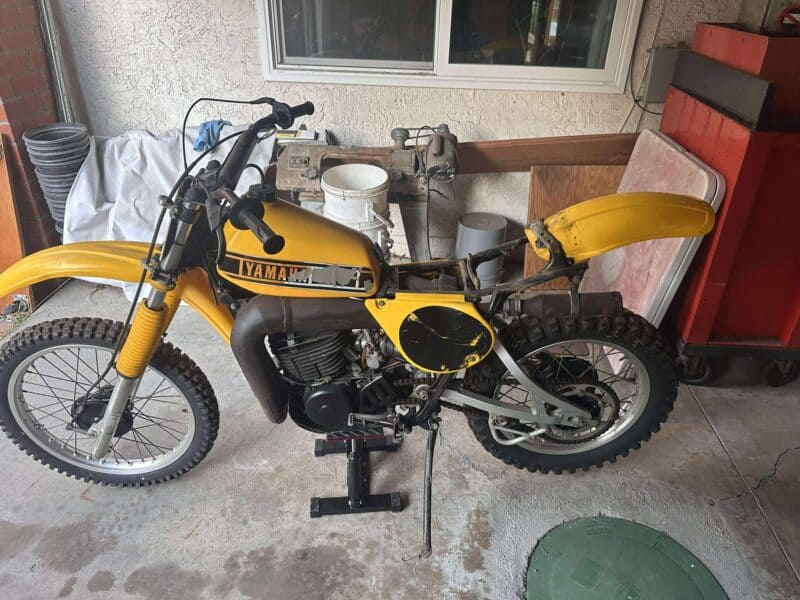 Well, I took the seat off and am about to upholster it to look like it did back in 1978, I shall be pulling all the plastics off and fit new ones that are great reproductions and of the highest quality, not cheap by any means but they fit just as the originals do.
Well, I took the seat off and am about to upholster it to look like it did back in 1978, I shall be pulling all the plastics off and fit new ones that are great reproductions and of the highest quality, not cheap by any means but they fit just as the originals do.
Looks so much better with new fenders, seat cover, gas tank, decals and an awesome set of side covers, hopefully the weather will cool down next week and I can make a start on the front end, but happy with it so far.
| In 1977, Yamaha lured multi-time World Motocross champion Heikki Mikkola away from Husqvarna to race for the tuning-fork brand. Heikki would reward the brand with the ’77 500 World Motocross title. The new strong and light chromoly steel chassis and work-style alloy swingarm were the result of development done by the race team. |
For the frame, Yamaha decided to ditch the YZ-D model’s mild steel tubing and go with chromoly steel for the YZ-E. Short for “chromium-molybdenum steel”, chromoly was lighter and stronger than the low carbon steel common to most Japanese machines at the time. By switching to chromoly for the chassis, Yamaha was able to knock a full two pounds off the YZ400 for ’78. Unfortunately, even with the lighter frame and swingarm, the new D model still tipped the scales at an eye opening 242 pounds. This was portly even for an Open bike and the Y-Zed continued to be the heaviest bike in the class.
On paper, it was the YZ400E was the powerhouse of the class, but on the track, it was twice the work of the smooth, but deceptively fast Swede.
| In 1977, Yamaha dropped its one year dalliance with air forks (a relationship they have yet to rekindle) and switched back to a set of 38mm convectional Kayaba spring forks. For 1978, they added 20mm of fork overlap to the ’77 units and called it a day. Punching out a total of 9.8 inches of travel, these KYB units were considered the best forks in the class, offering a plush feel and excellent control. |
While the frame and swingarm were new for 1978, the rest of the YZ400E was largely a carryover from the ’77 D model. The motor was the same 397cc, 85mm x 70mm ground-pounder it had been in 1977. Fed by a 38mm round-slide Mikuni carb and six-peddle reed-valve, the ’78 YZ400 produced one of the most exciting powerbands on the track. Acceleration was explosive off the bottom, with a burly midrange and hard hit. Once past the midrange, power tapered off appreciably, but from corner to corner it was brutally fast.
Gyro Gearloose approved: The advent of long travel suspension brought with it several engineering issues to be overcome. One of the more challenging of which was how to handle the extreme fluctuations in chain tension as the suspension moved through the stroke. In order to keep the chain from derailing, Yamaha used a spring loaded tensioner to take up the slack and two big chain rollers to keep it all on track. Even with the rollers, failures were common and the YZ was notorious for snapping the upper roller and letting the chain chew through the air boot. Eventually, the engineers figured out the answer to this conundrum was not to add more complicated tensioners, but instead to move the countershaft closer to the swingarm pivot.
On the track, the YZ offered one of the most thrilling rides of 1978. Because of its light flywheel and sudden delivery, the YZ was prone to wheelies and care had to be taken not to send the front fender skyward out of tight turns. It was snappy and quick revving, but more work than the smooth and mellow Husqvarna 390CR and Suzuki RM400C. In addition to its potent delivery, the YZ’s stubborn transmission often made life difficult. It was notchy and prone to missed shifts if care was not taken to catch the next cog. Power shifting was completely out of the question and the big yellow 400 demanded the clutch when shifting. Of course, this was no easy task with the Yamaha’s hand-cramping clutch pull and many savvy YZ pilots resorted to lengthening the actuator arm and swapping the stock clutch lever for a XT500 part to reduce the effort.
While certainly attractive, the stock Yamaha graphics were not long for this world. Plastic tanks were the bane of stock decals and that situation did not much improve until the advent of radiator shrouds in the early eighties. Even perforated aftermarket ones like these do not stand up for long against gas fumes. In the suspension department, the ’78 YZ400E was once again largely a carryover from ’77. Pumping out 9.8 inches of travel front and rear, the new bike did receive a minor upgrade with the addition of 20mm of slider overlap in the 38mm air/oil adjustable Kayaba forks. This was done to increase rigidity by offering more surface area and smoother action when the forks were topped out. Out back, the YZ-E continued to use a single large DeCarbon shock mounted down the centerline of the chassis. While lacking the trick remote reservoir of the Factory OW racers, the unit did offer an impressive 13 adjustable settings for compression and rebound.
Yama-hopper: A new longer and stronger alloy swingarm for 1978 improved performance of Yamaha’s unique Monocross suspension. While the swingarm reduced flex, the actual damper itself remained a mixed bag of performance. Under power, it reacted well and absorbed most hits without a whimper, but in throttle-off situations it could be violent and unpredictable. While the damping could be adjusted via a screw on the shock body (a very novel concept in 1978), the rebound remained very quick and the bike was prone to kicking on sharp hits and under braking.
Overall, the 1978 Yamaha YZ400E was a solid Open class offering. It could have used a longer swingarm, and a remote reservoir for the shock would have been nice, but it was capable of winning races in stock form. It was plenty fast and offered an excellent set of front forks, but its sudden delivery and slightly wayward handling made it harder to manage than the best from Europe. If you liked your big bore with a decidedly Nipponese flavor, it was a good choice, but if absolute performance was your top priority, there were better Old World alternatives available.
